Last Updated on January 8, 2024 by Greg Gillson
“Which binoculars are best for birding?”
This is a question I have been asked numerous times over the years.
In recent years binoculars have improved tremendously. As birding has become more popular, more and more manufacturers are creating more and more models aimed at the bird watching market. It’s hard to keep up!
Even though new makes of binoculars come out regularly, certain models consistently are the best value for the money, out-performing the competition, year after year.
The rest of this article will review what I think are the best binoculars for beginning birders. I will also explain the criteria I used for making this decision, as we compare each one.
The 5 best binoculars for bird watching beginners are these full-sized models:
- Vortex Viper HD 8×42
- Nikon Monarch 7 8×42
- Celestron Trailseeker ED 8×42
- Celestron Nature DX ED 8×42
- Nikon ProStaff 3S 8×42
|
My quick recommendation at two price-points: Looking to buy your very first pair of “real” outdoor birding binoculars? I was impressed with the Celestron Nature DX ED 8×42. These are about $175. If you have more to spend, and want a quality binocular. I recommend the Nikon Monarch 7 8×42. These are about $475. |
What kind of binoculars are best for bird watching beginners?
Whatever binocular you decide to choose, start by comparing it with this model: Nikon Monarch 5 8×42.
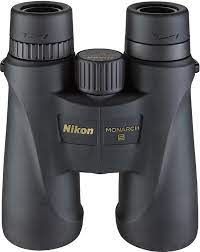
Why?
This very popular binocular has very good optical and mechanical properties and is exceptionally well-priced. If you just bought this one as your first birding binoculars it will suit you for many years. And you’ll probably be very happy with it.
However, I have 5 recommendations you may like even better.
First, a word about price
When you buy your beginning birding binoculars, as with many things in life, you get what you pay for.
We’re not talking about a $45 pair of binoculars that you pick up at Wal-Mart. Such binoculars have poor optical qualities, are probably not aligned properly, are dim and have soft focus. They are not waterproof. They are not rugged. They will likely be broken within 2 years, if not sooner. They will likely discourage you from watching birds.
Binoculars should last a long time. They are a major investment for most people. A good rule of thumb is that you should always buy the best binoculars you can afford.
I’m going to start by shocking you, and then work back from there. The very best birding binoculars are in the $2000-3000 price range! They’re very nice; but you don’t need them. In my opinion.
They are wonderful and, sure, I probably wouldn’t turn them down if you were to buy them for me as a gift.
The so-called “mid-priced” binoculars are in the $500-1000 range. This is where the value is, as I’ll explain below.
My personal price point for binoculars for myself is $500. That’s considered the upper end of “low-priced” birding binoculars. And that’s where I set the high price for beginner bird watching binoculars.
I’ve been birding for over 45 years and I think I’m on about my 7th pair of binoculars. I wore out the first couple pairs that were inexpensive. Then I damaged a couple pairs banging them on trailside rocks after taking a tumble in the mountains, or dropping them one too many times on the deck of a fishing boat while birding at sea. I even think I drove off with a pair of binoculars on the roof! Gone.
If I lose a pair of binoculars overboard, or smash them on a mountain cliff, I don’t want it to be a life-altering event. Thus, $500.
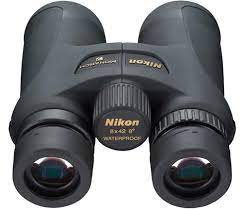
Greg’s weird rule-of-thumb on determining binocular value
Here’s my possibly warped view on how I value binoculars.
If I double the price, will I also double the number of birds I can identify?
That’s the purpose of binoculars, right? See and identify more birds.
$50 compared to $100? Very much so. $100 compared to $200 binoculars? Yes. Will a $400 pair of binoculars allow me to identify twice as many birds as a $200 pair of binoculars? Maybe, especially in low light woods or overcast.
Will an $800 pair of binoculars allow me to identify twice as many birds as a $400 pair of binoculars? No. But they may last longer and give a clearer view. Beyond this, though, the benefits for me decline quickly.
Some $500 pairs of binoculars are nearly as good as a $1000 pair. And a $3000 pair of binoculars is only marginally better than a $1000 pair. In my opinion. Your opinion, though, is the only one that matters.
To me, $500 is a lot of money. It may not be to you.
Or, conversely, $500 may be beyond all reason for you. If you are a beginning bird watcher and your budget is tight, you can get started with a decent pair of binoculars for under $150, even under $100 by sacrificing some features.
But plan for your binoculars to last at least 10 years. Not everyone is as hard on binoculars as I am! Buy the best you can afford, because you’ll likely be using them for the next 10 years, if not a lifetime.
Some important features of binoculars
Whether you are a beginning bird watcher or seasoned expert, you need to know some terminology about how binoculars are constructed and assessed. Then the comparisons below will make more sense. You will also be able to compare other models using their specification sheets.
Magnification determines how large the image appears to your eyes. It is set by the ocular lenses (the smaller lenses on your binocular that you look directly through).
Objective lens size, measured in millimeters, is the diameter of the “big end” lens on the binoculars. This lens gathers light.
7×35 is a magnification of 7 power and an objective lens of 35mm diameter.
Exit pupil. The magnification divided by the objective lens size, in millimeters. 5.0 is good and gives a sense of how bright the image will appear. A 7x35mm binocular has an exit pupil of 5.0.
Nitrogen purged/waterproof. All the binoculars listed here have the internal air (which contains oxygen and water vapor) pushed out and replaced with nitrogen (or argon). These are then sealed.
This makes them waterproof and fog proof on the inside. No more heating up your binoculars on the dashboard heater of your car in winter to remove condensed moisture from inside.
Most of these binoculars can be submerged in a couple of feet of water without getting water inside.
They can be used in a pouring rainstorm without worry.
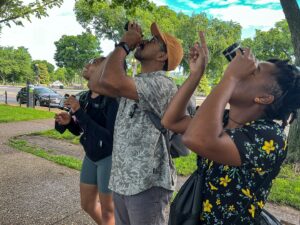
Close focus is important for viewing smaller birds in the woods, or butterflies at your feet, or hummingbirds on the window feeder.
Multicoated lenses. Inside the binoculars are prisms. You know what happens when you shine white light through a prism, right? It breaks it into a rainbow of colors with red at one end and violet at the other.
If you look through binoculars and the image has a violet halo, that is chromatic aberration. Lens coatings keep the light together. There are many types. This is where much of the increased cost comes from.
Eye relief is how far your eyes are from the ocular lens. If you are an eyeglass wearer, and use eyeglasses to look through binoculars (as I must), then your eyes are farther back from the lens than someone not wearing eyeglasses.
Adjustable eyecups push non-eyeglass wearers back away from the ocular lens to match the distance of eyeglass wearers, but fold down for eyeglass wearers.
Interpupillary distance is how close together your eyes are, and whether the binoculars can adjust. All the binoculars here adjust for most adult eyes: 56-72 millimeters.
If your head is unusually small (or a child) or your eyes are unusually far apart, this range may not be enough for your eyes to combine the two binocular images into one seamless view.
Field of View is how much width you can see edge-to-edge at a certain distance.
A binocular with a narrow field of view is like looking through a straw–you can’t see much, and may have a hard time “getting on” a flying bird, for instance.
Binoculars with a wider field of view take in more of the scenery, making it easier to initially put your binoculars right on the bird.
Measured as feet of width at 1000 yards distance. “300 feet at 1000” yards is fairly narrow, while “450 feet at 1000” yards is fairly wide.
Weight of binoculars determine how steady you can hold them. Very heavy binoculars can become wearisome to hold up to your eyes all day.
Putting it all together
Why not get the greatest magnification possible?
If you magnify too much you increase image shakiness. You also need larger objective lenses to gather more light to keep that 5.0mm ideal exit pupil brightness. Larger objective lenses are heavier and more costly. Thus, most general purpose birding binoculars are 8×42.
Some birders use 10×42 binoculars. These aren’t quite as bright and don’t focus as closely.
After wearing out my father’s 7×35 sporting binoculars, I purchased 10×50’s as my first beginner binoculars. They were bright enough, but big and heavy. I have used 8×42’s ever since.
Up to this point I’ve talked only about full-sized binoculars, something with objective lens sizes of 35mm to 50 mm.
Compact binoculars are smaller and lighter with smaller objective lenses. A popular size is the mid-sized 8×32.
The exit pupil is only 4.0, so they aren’t as bright in low-light conditions. This can be partially offset with good lens coatings.
These are great for casual use, hiking, a second pair to carry in your car’s glove compartment, or a window sill pair for watching your bird feeder. But they’ll work fine for birding if that’s all you can afford at this time.
Not one of the 5 recommended binoculars, I offer one of these as a “bonus” birding binocular.
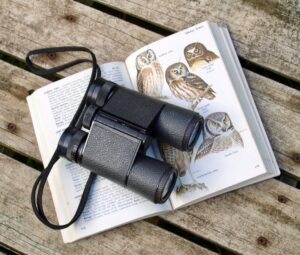
Comparing the 5 best binoculars for bird watching beginners
All of the best binoculars for beginning birders are nitrogen purged to be waterproof and fog proof, and have the same interpupillary adjustment range. So we don’t have to compare those features.
In general, the glass and coatings are the main driver in the difference in cost. Higher priced binoculars should have better brightness, sharpness, and clarity, and be more rugged and balanced in the hand. But there are other considerations we’ll examine below that help differentiate models from each other.
Since 8×42 is the most popular size and magnification, all my recommendations are of this size, called “full sized” binoculars.
[If you are determined to go with 10x binoculars of these same models, fine. There’s nothing wrong with that. But remember you will be sacrificing field of view, close focus, brightness, weight, and cost. In other words the 8×42 is superior to 10×42 in all aspects except magnification. Check the specs carefully so you know exactly what you are sacrificing.]
In the following tables, features with less than ideal specs are highlighted in red. These aren’t deal-breakers, rather, these are the compromises that differentiate one pair from another.
Likewise, I’ve highlighted in blue the especially good specs. I think these are the best beginner bird watching binoculars.
Remember, I said to start with the popular Nikon Monarch 5? Let’s do that.
<$300 binoculars
Nikon Monarch 5 8×42
Field of View: 330 feet at 1000 yards
Close focus: 8.2 feet
Eye relief: 19.5 mm
Weight: 20.8 ounces
Comments: Though perhaps the most popular birding binocular, the field of view is less than ideal for beginning birders. It does have a very long eye relief for comfortable viewing for all eyeglass wearers.
So, even though I ask you to compare with the very popular and best selling birding binocular, Nikon Monarch 5, I no longer recommend it, as there’s something better!
Celestron Trailseeker ED 8×42
Field of view: 426 feet at 1000 yards
Close focus: 6.5 feet
Eye relief: 17.2 mm
Weight: 23.5 ounces
Comments: The price is nearly identical with the Monarch 5. The close focus allows you to observe butterflies at your feet on the trail, or birds in close bushes, or even at your window feeder!
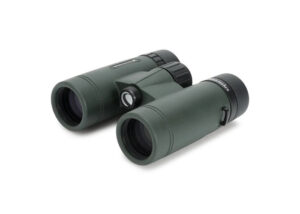
The eye relief is good for eyeglass wearers.
The field of view is terrifically wide! You’ll be able to see everything that’s going on not just with the bird under view, but off to the side. A bird flies over, you raise your binoculars, and there it is! The wide field of view makes getting on the bird so much easier.
$475-650 binoculars
Next we take a step up in quality and price from the Nikon Monarch 5. There are two binoculars worthy of your consideration. It doesn’t matter if you’re a beginner or not, these are great binoculars.
Nikon Monarch 7 8×42
Field of view: 420 feet at 1000 yards
Close focus: 8.2 feet
Eye relief: 17.1 mm
Weight: 22.9 ounces
Comments: Excellent field of view, especially compared to the Nikon Monarch 5. Most people with eyeglasses will be able to use these without problem (16 mm is minimum for eyeglasses), but some eyeglass wearers may experience some vignetting (not seeing all the way to the edge of the full image).
This is my latest purchase… and the best binoculars I’ve ever owned.

See my in-depth review of the Nikon Monarch 7 8×42 binocular.
Vortex Viper HD 8×42
Field of view: 409 feet at 1000 yards
Close focus: 6.5 feet
Eye relief: 18 mm
Weight: 24.5 ounces
Comments: Good field of view. Excellent close focus. Decent eye relief.
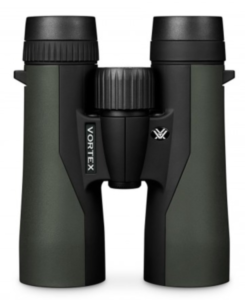
$120-175 binoculars
If your budget just won’t allow you to purchase the Nikon 5, then let’s drop the price to 1/2 or 1/3 of that.
Normally, I’d never recommend birding binoculars for less than $250, not even for beginners. But these are the exceptions. These are very good binoculars at a budget price.
Celestron Nature DX ED 8×42
Field of view: 393 feet
Close focus: 6.5 feet
Eye relief: 17.8 mm
Weight: 24.9 ounces
Comments: The ED is a newer model with extra-low dispersion glass for superior optical quality. It bumps the price up a bit to the upper end of this price range from the previous DX 8×42 version. But it’s well worth it. The close focus is excellent. Eye relief is good, as is the field of view. It’s a bit heavy, but not bad.

Read my in-depth review of the Celestron Nature DX ED 8×42.
Nikon ProStaff 3S 8×42
Field of view: 377 feet
Close focus: 9.8 feet
Eye relief: 20.2 mm
Weight: 19.9 ounces
Comments: Outstanding eye relief for eyeglass wearers. Light weight. Field of view and close focus are adequate. Waterproof at this low price! Amazing quality in a full-sized binocular for such a low price.
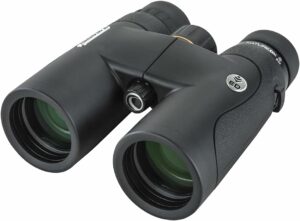
Bonus #1: compact binocular under $120
There’s a whole slew of compact binoculars from budget priced to well over $1000. In general they don’t perform as well in low-light conditions. But some people really like them.
I offer one bonus review of a compact binocular that has excellent quality for a low price.
Celestron Nature DX 8×32
Field of view: 388 feet
Close focus: 6.6 feet
Eye relief: 17.5 mm
Weight: 18 ounces
Exit pupil: 4.0 mm (this is good for a compact binocular)
Comments: This compact binocular has smaller objective lenses, so it’s not going to be as bright in low-light conditions as the other binoculars (exit pupil 4.0 mm compared to 5.25 mm for all others). Under most conditions you won’t notice the difference.
It is a decent binocular for such a low price.
And, the smaller lenses mean less weight and smaller overall size. The eye relief is good, field of view good, close focus is excellent.
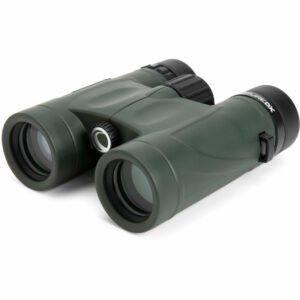
Bonus #2: I told you to buy the best binocular you could afford…
>$2500 binoculars
Zeiss Victory 8×42 SF T*
Field of View: 444 feet at 1000 yards
Close focus: 5.0 feet
Eye relief: 18 mm
Weight: 27.5 ounces
Comments: I don’t recommend this binocular for beginning bird watchers. But I did tell you to buy the best binoculars you could afford. So I offer this just in case.
I want you to look at these specs, though. Absolutely excellent field of view and outstanding close focus. The eye relief is long to accommodate most eyeglass wearers. Of course the glass and coatings are second-to-none.
However, you can’t build such a rugged product without weight. These are fairly heavy binoculars.
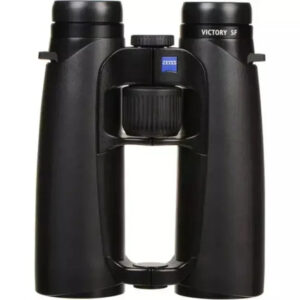
Wrapping Up
My recommendations are:
For a good quality, all round pair of outdoor birding binoculars, I was most impressed with the Celestron Nature DX ED 8×42. These are about $175.
The next step up in terms of quality (and also in price) is the Nikon Monarch 7 8×42.
For beginner bird watchers, you can’t go wrong with the Nikon Monarch 5 8×42.
Frequently Asked Questions
Is a scope better than binoculars for bird watching?
It depends! Both scopes and binoculars have their pros and cons for birdwatching, and the best choice depends on your specific needs and preferences. Here’s a breakdown to help you decide:
Binoculars:
- Pros:
- Portable and lightweight: Easy to carry around and use, especially for longer outings.
- Wider field of view: Makes it easier to scan large areas and track moving birds.
- Better depth perception: Gives a more natural view of the environment.
- No need for a tripod: Can be used handheld for quick observations.
- More comfortable for long viewing sessions: Less eye strain than using a scope.
- Cons:
- Lower magnification: Limited ability to see fine details on distant birds.
- Shaky image: Can be difficult to hold steady, especially at high magnifications.
Scopes:
- Pros:
- Higher magnification: Allows you to see much finer details on distant birds.
- Sharper image: Provides a more stable and clear view, especially when mounted on a tripod.
- Ideal for studying specific birds: Great for observing details like plumage, markings, and behavior.
- Cons:
- Bulky and heavy: Can be tiring to carry around for extended periods.
- Narrow field of view: Makes it harder to scan large areas and track moving birds.
- Requires a tripod for stability: Less convenient for quick observations.
- Can be more expensive: High-quality scopes can be significantly pricier than binoculars.
Is 8×42 or 10×42 better for birding?
Both 8×42 and 10×42 binoculars have their merits for birding, and the best choice for you ultimately depends on your birding style, terrain, and preferences. Here’s a breakdown:
8×42:
- Pros:
- Wider field of view: Easier to scan large areas and track moving birds, especially in dense foliage.
- Brighter image: More light gathering ability, particularly beneficial in low-light conditions.
- More stable image: Easier to hold steady, especially for handheld use.
- Generally more comfortable: Wider exit pupil reduces eye strain during long viewing sessions.
- Cons:
- Lower magnification: Less detail on distant birds compared to 10×42.
10×42:
- Pros:
- Higher magnification: Provides closer views of distant birds, ideal for detailed identification.
- Sharper image: Can offer better resolution and clarity due to increased magnification.
- Cons:
- Narrower field of view: Harder to scan large areas and track fast-moving birds.
- Dimmer image: Less light gathering, which can be problematic in low-light conditions.
- Image shakier: More difficult to hold steady, especially handheld.
- Potentially less comfortable: Smaller exit pupil might cause eye strain after extended use.
What are some tips for choosing the right pair of binoculars?
Consider these factors to make your decision:
- Birding environment:
- Open areas: 10×42 might be better for detailed views of distant birds.
- Dense foliage: 8×42 might be better for scanning and tracking quick-moving birds.
- Light conditions: If you bird mostly at dawn/dusk or under tree cover, 8×42’s brighter image might be preferable.
- Handheld vs. tripod use: If you often use your binoculars handheld, 8×42’s stability might be advantageous.
- Personal preference: Some birders prefer the wider field of view of 8×42, while others prioritize closer views with 10×42.
________________________________________________________________________________________________
Related Articles:
Nikon Monarch 5 vs 7: which is best binocular for birding?
12 Best birding binoculars under $200
Check out our in-depth binocular buying guide. Compare all the specs in the handy tables.



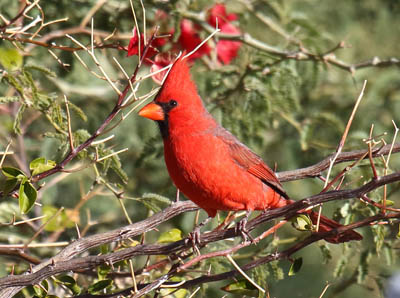
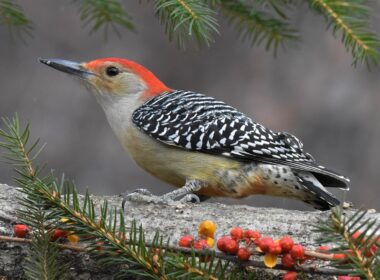
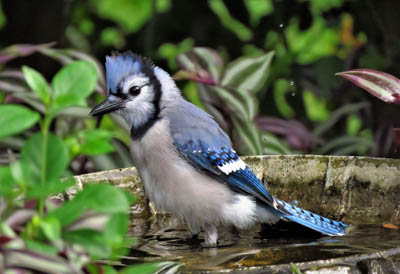
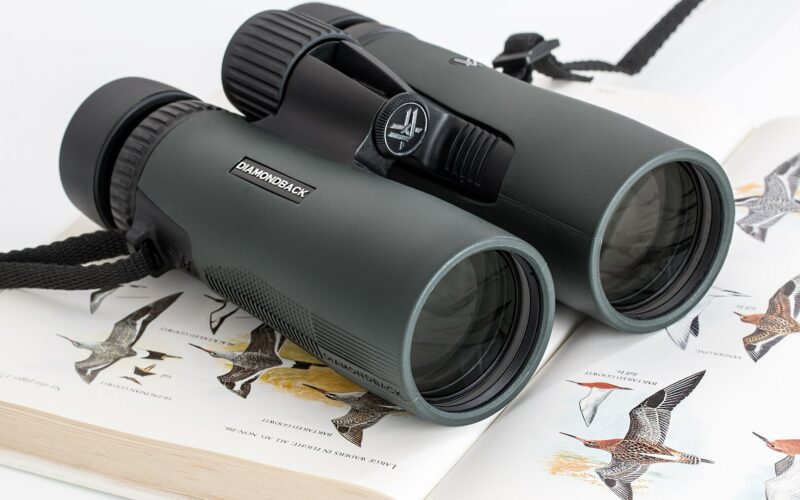
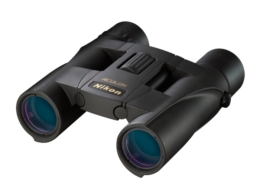
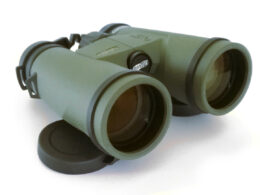
This is a good quality binocular list that you have listed here. than you sos much for this awesome list.
I appreciate the reviews and want to purchase my first birding binoculars. Haven't decided yet.
I hope this helps.
Great post, thank you! Particularly glad to see the recommendations based on being an eyeglass wearer!
Thank you